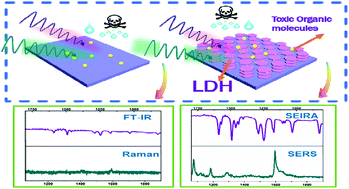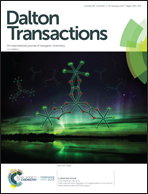Multifunctional Zn–Al layered double hydroxides for surface-enhanced Raman scattering and surface-enhanced infrared absorption†
Abstract
Surface-enhanced Raman scattering (SERS) and surface-enhanced infrared absorption (SEIRA) are complementary techniques, and both provide fingerprint structural information on various materials with a high sensitivity. Herein, Zn–Al layered double hydroxides (LDHs) are proposed for the first time as highly sensitive and uniform substrates for both SERS and SEIRA. Zn–Al LDHs show a remarkable SERS effect with an enhancement factor (EF) as high as 1.637 × 104 by using 4-mercaptobenzoic acid (4-MBA) as the probe molecule, where the charge transfer and hydrogen bonds are believed to result in the SERS effect. Interestingly, Zn–Al LDHs also exhibit SEIRA by using 4-methoxybenzenethiol (4-MTP), where the resultant substrates possess excellent long-term stability. This study not only presents a facile route to fabricate LDH materials, but also provides a novel substrate that can be used in both SERS and SEIRA.



 Please wait while we load your content...
Please wait while we load your content...